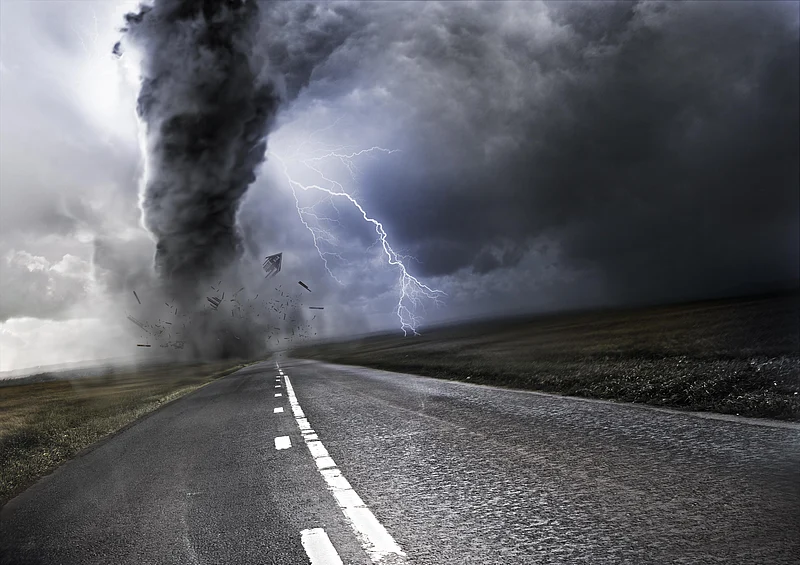Get Healthy!

- Posted April 4, 2023
Devastating Tornadoes Leave Hazards in Their Wake: Tips to Stay Safe
Tornadoes bring with them many dangers, but perhaps not so evident are the risks from colorless and odorless carbon monoxide (CO) from generators used to temporarily restore power.
With parts of the United States expecting another round of severe weather, the Consumer Product Safety Commission offers tips to avoid CO poisoning or fires in the aftermath of a major storm or tornado.
CO poisoning from portable generators can kill in minutes. Those exposed to this gas can become unconscious before experiencing CO-poisoning symptoms of nausea, dizziness or weakness.
About 85 people die in the United States each year from CO poisoning from portable generators, according to the CPSC. A recent report from the commission for 2011-2021 found Black Americans were at higher risk, comprising about 23% of generator related CO deaths, nearly double the estimated share of the population.
The CPSC offers the following advice:
Never operate a portable generator inside a home, garage, basement, crawlspace or shed. It's not enough to open the window and doors. Lethal levels of CO can still build up.
Operate portable generators outside at least 20 feet away from the house. Direct the generator's exhaust away from the home and any other buildings that someone could enter. Meanwhile, close windows and other openings that are in the path of the generator's exhaust.
Do not operate a generator on an outside porch or in a carport, which is too close to the home.
Properly maintain your generator. Read and follow the labels, instructions and warnings on the generator and in the owner's manual.
Buying a new generator? Look for one that has a CO shut-off safety feature. This is designed to turn off the generator automatically when high levels of CO are present around the machine. These models are advertised as PGMA G300-2018 and UL 2201. They are estimated to reduce deaths from CO poisoning by 87% and 100%, respectively. UL 2201 certified models have reduced CO emissions in addition to the CO shut-off feature.
Indoor tips
Install battery-operated CO alarms or CO alarms with battery backup on each level of your home and outside separate sleeping areas. Interconnected CO alarms are best.
Make sure smoke alarms are installed on every level and inside each bedroom.
Test CO and smoke alarms monthly to make sure they are working properly. Replace batteries if needed.
Never ignore an alarm when it sounds. Get outside immediately, then call 911.
Portable heaters can also be dangerous, the CPSC noted. Keep all sides of the portable heater at least 3 feet from beds, clothes, curtains, papers, sofas and other items that can catch fire.
Always use a wall outlet for a portable heater. Never use a power strip and never run the heater's cord under rugs or carpeting.
Make sure the heater is not near water. Don't touch it if you are wet.
Place the heater on a stable, level surface, where it will not be knocked over.
Don't leave a portable heater running unattended in a confined space.
If the heater's cord or plug is hot, disconnect the heater and contact an authorized repair person. If any part of the outlet is hot, contact a certified electrician.
Charcoal and candles also pose dangers, including during power outages.
Never use charcoal indoors, which can also produce lethal levels of CO. Do not cook on a charcoal grill in a garage, even with the door open, the CPSC advised.
If possible, use flashlights or battery-operated candles instead of burning candles. If you must use candles, don't place them near anything that can catch fire. Never leave burning candles unattended. Always extinguish candles when leaving the room and before sleeping.
If you hear or smell gas leaking, leave your home immediately, the CPSC cautioned. Contact local gas authorities. Do not operate any electronics, such as lights or a phone, before leaving.
More information
The U.S. Centers for Disease Control and Prevention has more on carbon monoxide.
SOURCE: Consumer Product Safety Commission, news release, April 3, 2023








